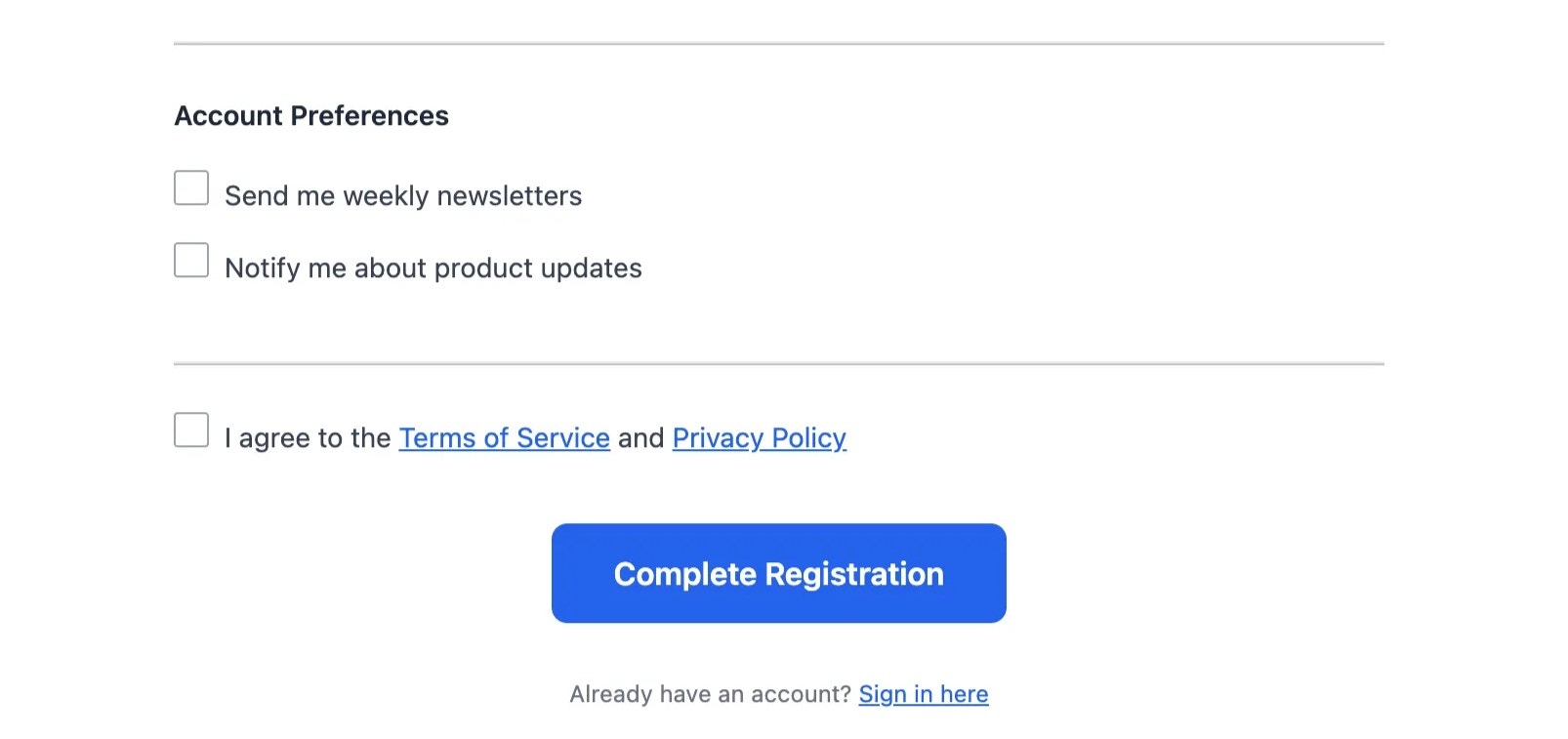Why consent matters
Many senders assume that if someone provides an email address, that automatically means it’s okay to email them. But that’s not always true and can often cause large-scale deliverability problems, especially for marketing or bulk messages. Mailbox providers like Gmail and Outlook closely monitor how recipients react to your emails, paying special attention to whether people mark your emails as spam. High complaint rates or low overall engagement signal that your messages weren’t wanted, which can hurt your reputation and lead to filtering, blocking, or delivery issues.What doesn’t count as permission
These common methods are not considered valid:- Including a clause in your Terms of Service that says users “agree to receive emails”
- Using a pre-checked box on your signup form for marketing messages
- Assuming someone is opted in unless they unsubscribe
What does count as permission
Valid consent means the recipient clearly and knowingly agreed to receive the specific kind of email you’re sending. According to GDPR (and general best practices), consent must be:- Freely given – without pressure, bundling, or tricks
- Specific – clearly describes the type of messages the user will receive
- Informed – the user knows who you are and how you’ll use their data
- Unambiguous – requires an active opt-in (like checking a box)
What happens if you send without consent?
If you send to recipients who didn’t explicitly opt in, here’s what can happen:- Some of those people will mark the message as spam.
- Mailbox providers may block your mail or filter it to the spam folder.
- If your spam complaint or bounce rate remains high, Resend may have to pause or terminate your account to protect our sending reputation.
Best practice: Let people say “yes”
The easiest way to get consent is to ask for it clearly and separately. Add an unchecked checkbox to your signup form, like this:Yes, I want to receive product updates and occasional marketing emailsFollow these best practices:
- Keep it optional and unchecked by default
- Make the wording clear and specific
- Place it outside of your Terms of Service
- Include a one-click unsubscribe link in every email
